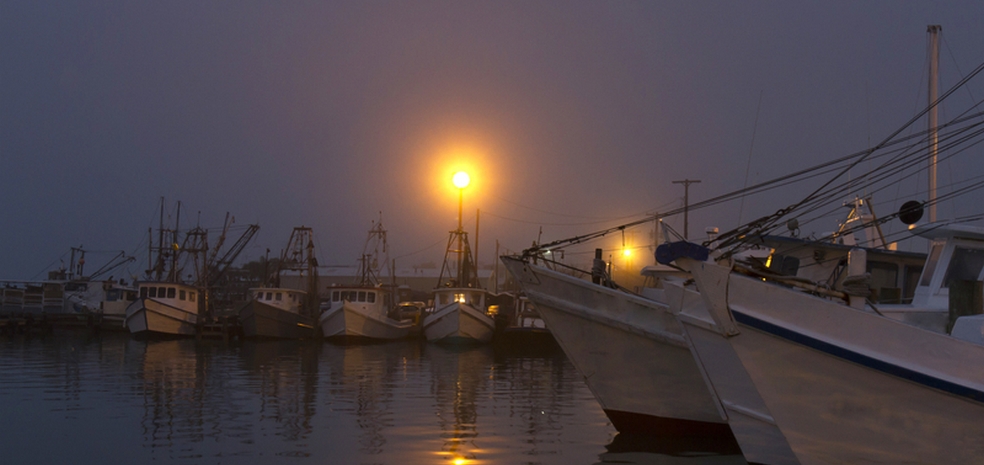How-to Tip: Reaching the Safety of God’s Harbor
 Have you ever been sailing? Do you know that feeling when you are making your way out of the channel into a harbor, uncertain of how to reach your destination?
Have you ever been sailing? Do you know that feeling when you are making your way out of the channel into a harbor, uncertain of how to reach your destination?
As someone who has spent some time on a sailboat, I know that in order to get to the harbor, you have to see where you’re going. Otherwise you risk running aground. Normally, a depth finder comes to your aid because it sees what you cannot. If your instruments work properly, you can make your way safely into the harbor. Sailing to the harbor is a complicated combination of what you can see and what your depth finder and other instruments that guide you reveal.
Even though a depth finder or other instruments can help us, I find that most sailors, including me, fail to pay attention to them. When we choose to ignore these guides, we find ourselves trying to find the path to safety unaided. How do we get there from here?
The Dilemma
This is the dilemma the Church has faced for centuries. God invites us to come out of the channel into the harbor of his safety. But how do we get there from here, particularly when the harbor can seem so hard to find?
The prophet Isaiah presents us with some formidable words: “For my thoughts are not your thoughts, nor are your ways my ways, says the Lord” (Isaiah 55:8a). What do we make of these statements? Isaiah shows the vast gap between God’s knowledge and our knowing, the great rift between God’s thoughts and our thoughts. Prophetic literature, including Isaiah, is often repetitious. The repetition is God saying to us, “I want you to get this one. I’m not going to say it just once.” And what does this mean? As we try to find God’s harbor, we face an even greater challenge: We don’t know the way, so we can’t possibly get there on our own.
John’s gospel presents a similar challenge. In John 15, Jesus calls us to abide in Christ. He is the true vine, and if we abide in him, we receive extraordinary promises and yield abundant fruit. If we don’t abide in the vine, we’re cut off and thrown in the fire to be burned.
But what if we don’t know how to abide? If the vine represents our harbor of safety, how do we get there?
The Invitation
The question, our dilemma, presupposes that we must do something on our own to reach the harbor. But this kind of thinking needs transformation. Something else must break into the picture. And something new already has.
Jesus came to reveal the righteousness of God, a saving righteousness. Christ’s faithfulness reveals to us not a new set of commandments, but an invitation. Jesus invites us to what we could never find except by God’s faithfulness in choosing to reveal it. Without this faithfulness, as Isaiah has already told us, there is no bridge between God’s thoughts and our thoughts, God’s ways and our ways.
Jesus himself, by his own coming and by what he reveals, is the invitation. This invitation leads to the place of death, the cross of Christ. At the cross, we see the shortcomings of all our actions. Our instruments don’t work. And we can’t get there on our own.
The Miracle
The miracle is not that God somehow makes our instruments work. Instead, he sees us struggling to get from the channel to the harbor. He is the one who stands on the edge of the pier, chooses to come out to take the line of our boats, and safely brings us in. He realizes our capacity to read instruments isn’t as good as it could be. This miracle is a picture of saving righteousness.
God acts by both inviting us and leading us to the cross of Christ. The cross, an instrument of shameful death, is also the place where the curse is broken and where we are relieved of the burden of our efforts. His death relieves us, and now we have the kind of freedom that allows us to enter in and be taught by God himself. He teaches us what it means to abide in him. And without this teaching, we don’t know how to get to the harbor.
The Entrance
Our temptation is to create other rules of obligation and fail to accept God’s invitation. We create lists such as “If you want to be a good Episcopalian, here’s what it takes. . .” Customs and protocols have a purpose and influence the way we organize ourselves. But if rules become the standard of acceptance or condemnation, we err.
The Holy Spirit reveals himself to us, those who cling to the nail-scarred hands on the cross. We receive forgiveness because he has made the room inside us to receive that which he so powerfully, freely, and tenderly gives. As Paul explains, this is why we must “bear with one another and. . . forgive each other; just as the Lord has forgiven you” (Colossians 3:13).
No matter what we do by protocol or custom, by mercy we walk under the very blood of Christ. It is by his grace alone that we enter the harbor.
Have you found your own path to God’s harbor smooth or rough sailing? Who has helped you find the way? Please share your responses on social media.

